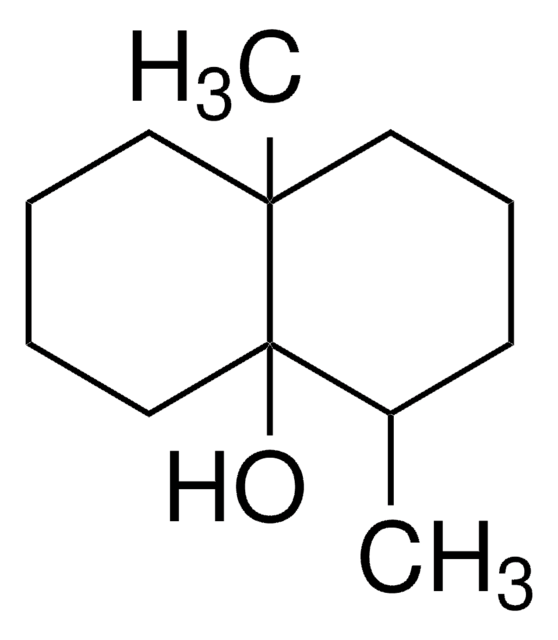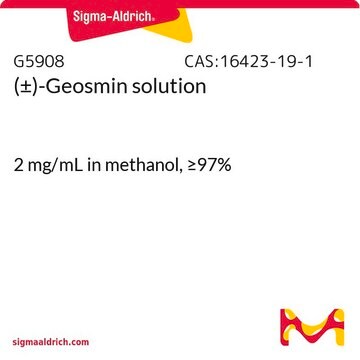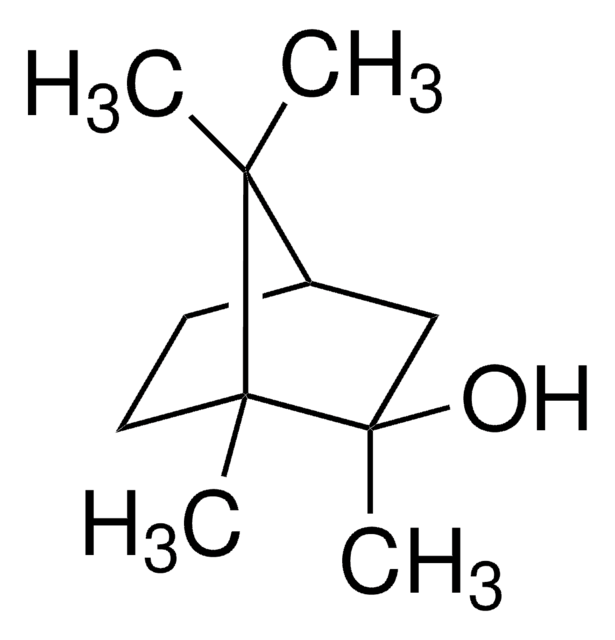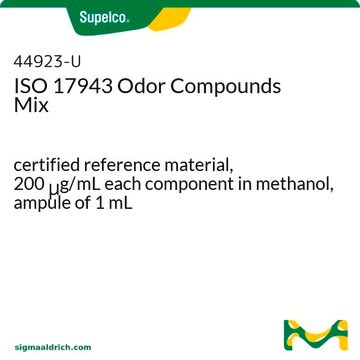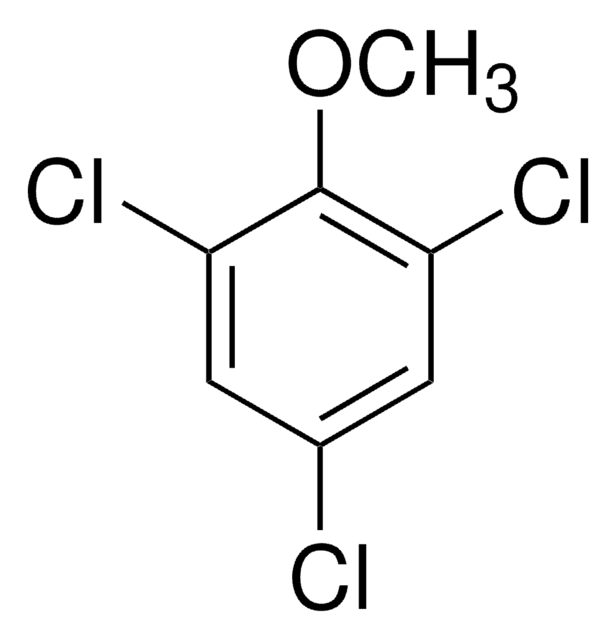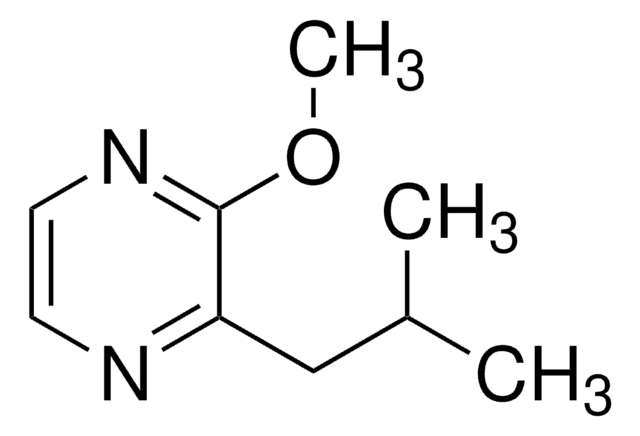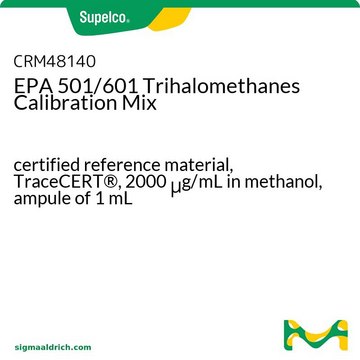CRM47523
2-Methylisoborneol solution
certified reference material, TraceCERT®, 100 μg/mL in methanol, ampule of 1 mL
Sinonimo/i:
Drinking Water Odor Standards, Odor Standards, (1R-exo)-1,2,7,7-Tetramethylbicyclo[2.2.1]heptan-2-ol
About This Item
Prodotti consigliati
Grado
certified reference material
TraceCERT®
Livello qualitativo
Nome Commerciale
TraceCERT®
CdA
current certificate can be downloaded
Confezionamento
ampule of 1 mL
Concentrazione
100 μg/mL in methanol
tecniche
HPLC: suitable
gas chromatography (GC): suitable
applicazioni
cleaning products
cosmetics
environmental
food and beverages
personal care
Formato
single component solution
Temperatura di conservazione
2-30°C
Stringa SMILE
CC1(C)[C@@H]2CC[C@@]1(C)[C@](C)(O)C2
InChI
1S/C11H20O/c1-9(2)8-5-6-10(9,3)11(4,12)7-8/h8,12H,5-7H2,1-4H3/t8-,10-,11-/m1/s1
LFYXNXGVLGKVCJ-FBIMIBRVSA-N
Cerchi prodotti simili? Visita Guida al confronto tra prodotti
Applicazioni
Altre note
Note legali
Non trovi il prodotto giusto?
Prova il nostro Motore di ricerca dei prodotti.
Avvertenze
Danger
Indicazioni di pericolo
Consigli di prudenza
Classi di pericolo
Acute Tox. 3 Dermal - Acute Tox. 3 Inhalation - Acute Tox. 3 Oral - Flam. Liq. 2 - STOT SE 1
Organi bersaglio
Eyes,Central nervous system
Codice della classe di stoccaggio
3 - Flammable liquids
Classe di pericolosità dell'acqua (WGK)
WGK 2
Punto d’infiammabilità (°F)
49.5 °F - closed cup
Punto d’infiammabilità (°C)
9.7 °C - closed cup
Scegli una delle versioni più recenti:
Possiedi già questo prodotto?
I documenti relativi ai prodotti acquistati recentemente sono disponibili nell’Archivio dei documenti.
I clienti hanno visto anche
Il team dei nostri ricercatori vanta grande esperienza in tutte le aree della ricerca quali Life Science, scienza dei materiali, sintesi chimica, cromatografia, discipline analitiche, ecc..
Contatta l'Assistenza Tecnica.
